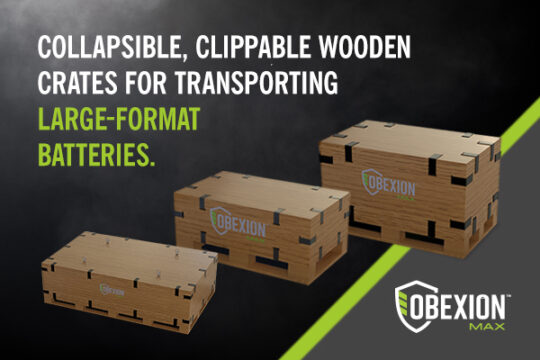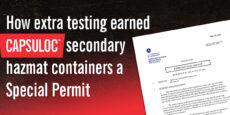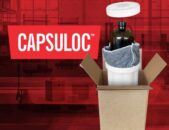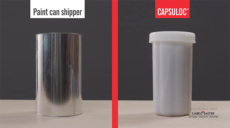Large-format lithium batteries power our world—from electric vehicles and energy storage systems to industrial robots and even aircraft. But with great power comes great responsibility, especially when it comes to safe and compliant transportation. That’s why Labelmaster’s DGeo packaging division has partnered with Action Wood 360 to offer easy-to-use collapsible wooden crates for large-format battery…
Top 12 questions (and answers) about Capsuloc™ secondary hazmat containers
“Why didn’t someone think of this sooner?” That’s one question we hear a lot about our new Capsuloc™ secondary hazmat containers. They don’t look or work like the metal can exemption shippers Dangerous Goods shippers have used for decades. But once people see all the advantages Capsuloc kits offer, they want to know as many…
How extra testing earned Capsuloc™ secondary hazmat containers a Special Permit
New ideas in Dangerous Goods packaging don’t come along very often. And when they do, they get a lot of extra regulatory scrutiny. Take secondary hazmat packaging kits. For decades, the only option available was the metal can, and all the packaging regulations providing exceptions were written with metal cans in mind. So, when we…
6 ways Capsuloc™ secondary hazmat containers can make your operation more efficient
No one really likes paint can-style secondary hazmat containers, but we’ve been putting up with them (and all their related headaches) for decades. Why? Because there hasn’t been a better alternative. Now there is. New Capsuloc™ finally gives Dangerous Goods shippers an alternative to the paint can, and lots of shippers are already kicking the…
Why Capsuloc™ hazmat containers have shippers kicking the can. Literally.
Paint can-style secondary hazmat containers have been a necessary evil for decades. They’re essential for shipping certain Dangerous Goods, but no one really likes them. Given a better alternative, most DG operations would kick the paint can shipper like a bad habit. With the introduction of Capsuloc™ — now with special permit DOT-SP 21488 and…
Stop cursing your paint can hazmat containers. Meet Capsuloc™.
Ask any Dangerous Goods pro about “paint can” secondary containers, and the response may require a parental warning for language. You’ll hear about lids that won’t stay closed, or that can’t be pried open. You’ll hear about leaks in transit, smashed fingers from errant mallets, and ring locks that won’t come off without a power…
The ABCs of the modern supply chain: Automation, Blockchain and Compliance
Trucks drive themselves hundreds of miles on public highways. Warehouse workers’ glasses tell them which items to pick. Overseas transactions worth millions are consummated with the flick of a wand. This is not your father’s supply chain. Heck, it’s not even your older brother’s supply chain. If you find your head spinning at the pace…
Curious about “extreme” hazmat labels and placards? Try them yourself!
When we introduced hazmat labels, placards and marks for extreme conditions back in 2019, we had no idea that 2020 would introduce a whole new meaning to the words “extreme conditions.” No, our new line of labels, placards and marks was not designed to help Dangerous Goods organizations handle a global pandemic. (The hazmat supply…
Labelmaster hazmat packaging innovations banish “Paint Can Hell,” make shipping bigger lithium batteries easier.
Who thought it was a good idea to ship volatile hazmat items in paint cans? Certainly no one who’s ever painted their living room. First you need a screwdriver or a special “key” to pry the lid off the can, and it takes so much effort you end up sloshing some out onto the floor.…
Distilleries making hand sanitizer? Hooray! Here’s how to ship it safely.
Among all the dire news surrounding the COVID-19 crisis, there’s one story that’s lightened a lot of people’s moods: distillers of alcoholic beverages (including several in the Chicago area) switching over some of their production to make desperately needed hand sanitizer. We love this story because: Supplies of hand sanitizer have been running low at…









